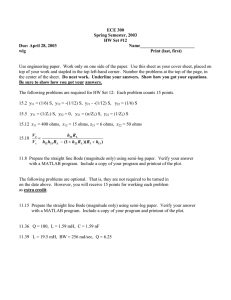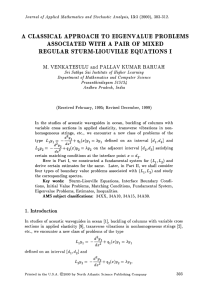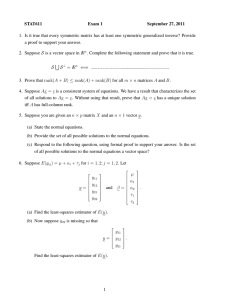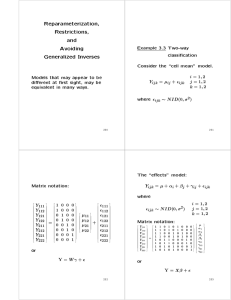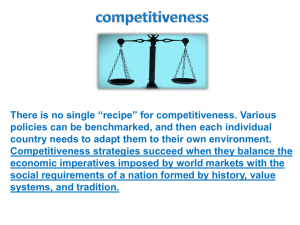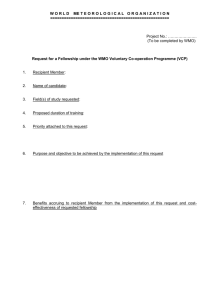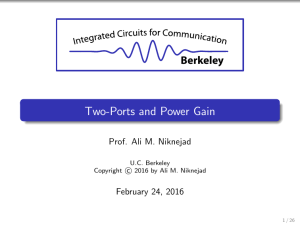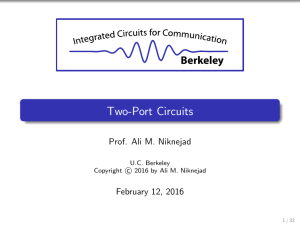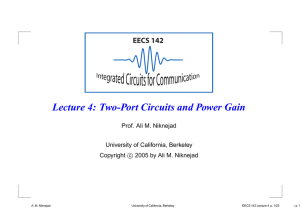Document 10714933
advertisement
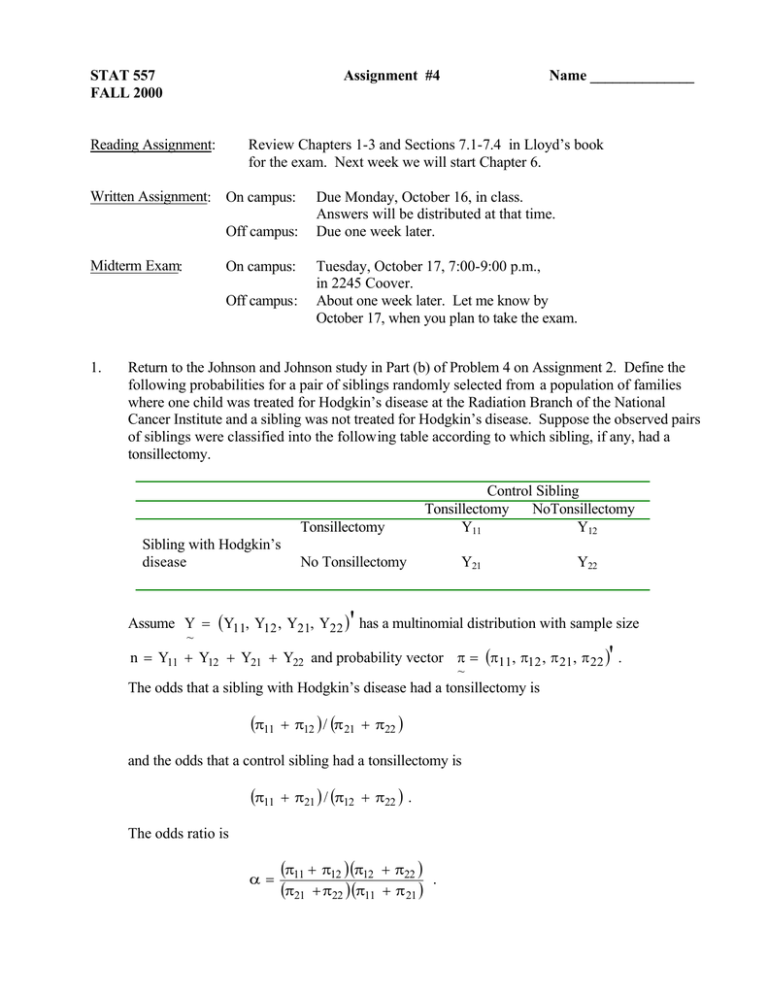
STAT 557 FALL 2000 Assignment #4 Reading Assignment: Review Chapters 1-3 and Sections 7.1-7.4 in Lloyd’s book for the exam. Next week we will start Chapter 6. Written Assignment: On campus: Off campus: Midterm Exam: On campus: Off campus: 1. Name ______________ Due Monday, October 16, in class. Answers will be distributed at that time. Due one week later. Tuesday, October 17, 7:00-9:00 p.m., in 2245 Coover. About one week later. Let me know by October 17, when you plan to take the exam. Return to the Johnson and Johnson study in Part (b) of Problem 4 on Assignment 2. Define the following probabilities for a pair of siblings randomly selected from a population of families where one child was treated for Hodgkin’s disease at the Radiation Branch of the National Cancer Institute and a sibling was not treated for Hodgkin’s disease. Suppose the observed pairs of siblings were classified into the following table according to which sibling, if any, had a tonsillectomy. Tonsillectomy Sibling with Hodgkin’s disease Control Sibling Tonsillectomy NoTonsillectomy Y11 Y12 No Tonsillectomy Y21 Y22 Assume Y = (Y11, Y12 , Y21, Y22 ) has a multinomial distribution with sample size ' ~ n = Y11 + Y12 + Y21 + Y22 and probability vector π = (π11, π12 , π 21, π 22 ) . ~ The odds that a sibling with Hodgkin’s disease had a tonsillectomy is (π11 + π12 ) / (π 21 + π22 ) and the odds that a control sibling had a tonsillectomy is (π11 + π21 ) / (π12 + π22 ) . α= (π11 + π12 )(π12 (π21 + π22 )(π11 The odds ratio is + π22 ) . + π 21 ) ' 2 Derive the large sample normal approximation to the distribution of log (α̂ ) , where αˆ = 2. (Y11 + Y12 )(Y12 + Y22 ) (Y21 + Y22 )(Y11 + Y21) . Return to Problem 1 on Assignment 3. Consider the table of counts for female ratings of the physical and psychological demands of work. Let Y = (Y11 Y21 Y31 Y12 Y22 Y32 Y13 Y23 Y33 ) ' ~ denote the table of counts strung out into a vector by columns. Assume that females were sampled from a large population of female workers, using simple random sampling without replacement. Then Y has a multinomial distribution with sample size denoted by n and ~ probability vector π = (π11 π 21 π 31 π12 π 22 π32 π13 π 23 π33 ) . ' ~ (a) The marginal probabilities for the distribution across the categories for physical demands of work are π1+ π2 + π 3+ = Aπ ~ where 1 0 0 1 0 0 1 0 0 A = 0 1 0 0 1 0 0 1 0 0 0 1 0 0 1 0 0 1 Using the large sample normal distribution for p = n −1 Y and the delta method, derive ~ ~ the large sample normal distribution for the set of marginal counts g Y = A Y . Note ~ ~ that g Y is a linear function of Y and the matrix of first partial derivatives of ~ ~ g Y is A. ~ 3 (b) Find the matrix B for which π +1 π+ 2 = B π ~ π +3 gives the marginal probabilities for the distribution across the categories for psychological demands of work. (c) Now find the large sample normal distribution for (A − B) Y , the difference in the ~ marginal counts in corresponding categories (usually, sometimes, or seldom) for physical and psychological demands of work. 3. (d) Use the result in Part (c) to create a Wald test of the null hypothesis of homogeneous marginal distributions for the physical and psychological demands of work. Report degrees of freedom for the large sample chi-square approximation to your test statistic. What is the alternative hypothesis? (e) Apply the test you derived in Part (d) to the data reported by female workers in Problem 1 on Assignment 3. State your conclusion. (a) Test the null hypothesis of symmetry H o : πij = π ji for the data in Problem 2. You can construct a Wald test by writing the null hypothesis as H 0 : C π = 0 for ~ ~ π = (π11 π 21 π 31 π12 π 22 π32 π13 π 23 π33 ) and some matrix C that you must ~ ' identify. Report the formula for C and apply your test to the data from Problem 2 on this assignment. Report degrees of freedom and a p-value for your test and state your conclusion. (b) Given your result from Part (e) in Problem 2 on this assignment, was the result in Part (a) of Problem 3 to be expected? Explain.
